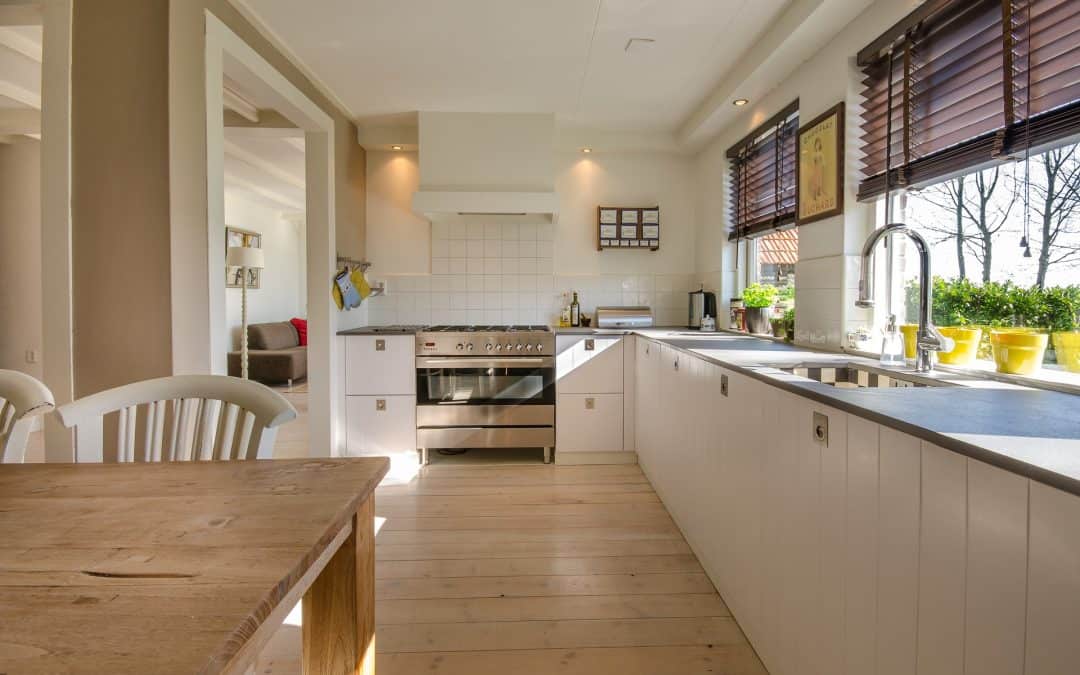If you’re considering remodeling your kitchen this year, you’re not alone. Millions of American homeowners have completed, are currently working on, or plan to start renovations in 2019. For those still on the fence, one of the biggest obstacles to getting started are the costs involved: according to recent data from HomeAdvisor, the average U.S. kitchen remodel costs north of $22,000!
However, it is possible to complete a kitchen remodel for a lot less. In this article, we’ll review what you should prioritize and how you can get the best-possible value out of your kitchen renovation.
Think twice about layout changes
Home remodeling television shows often can drive a positive feedback loop, helping to set trends and popularize certain concepts. One such example is the “open kitchen.” These two words are repeated so often on such shows that they—and the scene of a very satisfied homeowner taking a sledgehammer to that interior wall—have almost become cliche. However, this trend has bled over into the real world, with more and more homeowners considering opening their own kitchen as part of their remodel.
There’s no question that an open kitchen concept can add value. Prospective buyers nearly always prefer an open kitchen to a closed one, especially if the older kitchen uses a “galley” style where cooking and entertaining space is very limited.
However, this aspect of the remodel can add to your costs, especially if plumbing, cabinets, electrical, and supports have to be moved as part of removing the interior wall. While many kitchens can benefit from being “opened,” it’s not always essential for a successful, value-boosting remodel. Talk with your local remodeler and weigh your options—and costs—before you pick up that sledgehammer and go to town.
Make the “big ticket” items your priority
When planning your kitchen remodel, stop and ask yourself what you would expect to see if you were told a kitchen had been “remodeled.” For most prospective buyers, a kitchen remodel isn’t really a remodel unless it includes new countertops and new or updated cabinets. Not only are these the most eye-catching parts of the remodel, but they are also what adds value to the project. Unfortunately, they are also likely to be the most expensive part of the remodel: the average remodeler puts between 39 and 56 percent of their budget into counters and cabinets, with the difference in that range accounting for installation.
Our recommendation: avoid the temptation of trying to get by with the cheapest materials or installation service out there. While this will lower your total project costs, you run the risk of investing in poor-quality countertops and cabinets that will quickly show wear-and-tear. Similarly, any instance where you hire the cheapest “professional” on the market is one in which you risk getting exactly what you pay for: shoddy, cheap work. While you don’t have to go high-end, pick high-quality countertops and cabinets from a trusted source, and have them installed by a remodeler with good reviews and recommendations.
Divide the project into what you can do, and what you’ll need a professional to handle
In general, we recommend leaving plumbing, electrical, or installation work to the professionals, and turning your attention to other aspects of your kitchen remodel. Some things homeowners can tackle on their own potentially include:
- Installing your own tile, vinyl, or laminate flooring in the kitchen.
- Buying and installing new appliances.
- Adding backsplash tile once the countertops and cabinets are in place.
- Hanging pendant lighting or adding under-cabinet lighting.
- Painting the walls of the kitchen.
By handling these tasks yourself, you’ll save on installation costs, which can help you stay inside of your original budget, especially as you near the conclusion of the project.
To see more great tips for remodeling your kitchen on a tight budget, check out this new infographic from the team of kitchen remodeling experts at Superior Stone & Cabinet of Phoenix, Arizona:


Recent Comments